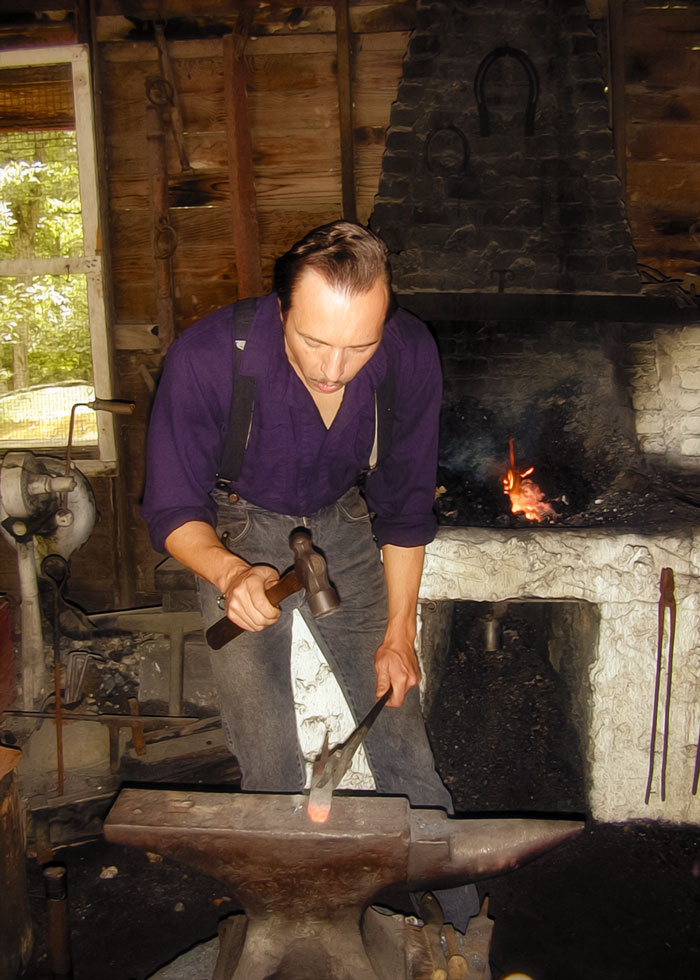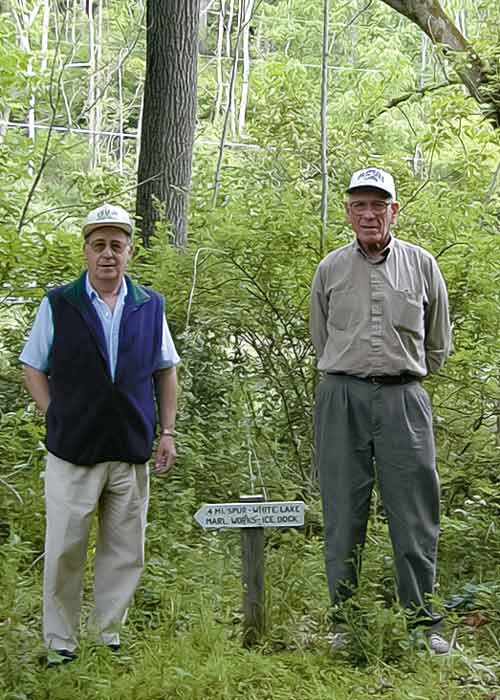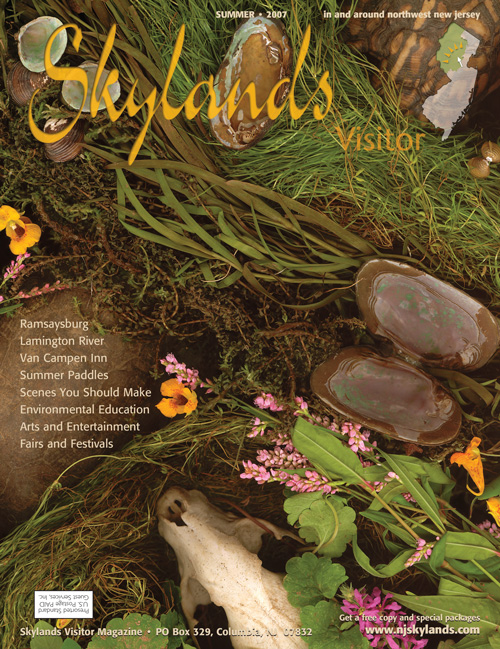It has been thirty years since the Skylands Visitor magazine was conceived in partnership with the Skylands Tourism Council to promote tourism in Northwest New Jersey. The tourism council is long dissolved, but our publication has survived primarily to the overwhelming support that has come from a wide range of brilliant writers and photographers. These contributors have expanded the notion of “Skylands” as really being a perspective; a way of looking at and appreciating Northwestern New Jersey. The region contains two national parks at its edges, 60,000 acres of state parkland, and a diverse and beautiful geography filled with lakes, rivers and picturesque hills dotted with farms. Few places in the nation of comparable size can match the Skylands in breadth of history and heritage or depth of culture. Since 1990 there have been 120 issues with roughly 750 articles by 150 contributors. We’ll start by remembering these three writers, mostly because they’re gone and are sorely missed. There are many more, and we’ll go along this year, and maybe next, trying to adequately acknowledge their gifts.
The day I walked into Andy Drysdale’s blacksmith shop at Waterloo Village one spring day in 1994, I learned a lot and made a new friend. A few days later he sent me a story that began by explaining his path to blacksmithdom.
“I never intended to be a blacksmith. I never pictured it being my livelihood at the age of thirty-two, but I’m certainly not disappointed, This profession of mine is a direct outgrowth of my interest in history, and I know exactly where that came from. Growing up on my great-grandfather’s Chester Township farm in the 1960s and 1970s I was surrounded by the material culture of generations; buggies, old farm equipment, ancient tools and one battered nineteenth century anvil.
“Luckily, I had lots of interpreters for all of this memorabilia. There were many folks born in the late 1800s still very much alive. They filled me with stories of draft horses, Civil War veterans and old-time tradesmen. As I got older I found I could explore the vivid mental images they had given me by working at historic sites. Blacksmithing, after all those years of visualizing the men who had made and used the tools of my childhood, had the most appeal. Working at it when I could, reading everything I could get my hands on, I pursued it simply for the love of the craft, rather than as a career goal. Then came an unbelievable call one day from Waterloo Village, in Stanhope, requesting help in securing a full-time smith. I gave up my job as a curator at a farm museum, packed up my tools, and headed for Sussex County.”

Besides blacksmithing, Andy had learned how to write. When his career took its next step from Waterloo Village to the directorship of the Red Mill Museum Village in Clinton, Andy sent a perfectly distilled narrative about the mill, the neighboring art center and their picturesque setting along the South Branch of the Raritan.
“The people who make up the town seem to understand that preservation is not simply the safeguarding of old things for old thing’s sake, but rather for the vitality that quality from the past can add to contemporary life. The synthesis of old and new works well here. The friendly faces on Clinton’s Main Street speak volumes.”
In 1999 Andy sent a story about Wild West City, where he worked now and then, keeping his hand in as a blacksmith.
“Wild West City shows and activities have in their very essence, an ageless theme: the triumph of good over evil. Perhaps our most basic commonly-held trait as Americans is the optimism that the good guys will ultimately triumph if they stand their ground; that despite defeats, tragedies and injustices, our story is full of brave people from all backgrounds, sometimes even pitted against one another.”
From 2004 until his death in December, 2018, Drysdale served as curator at the Shippen Manor Museum in Oxford where, in addition to overseeing the ongoing refurbishment of the manor, he helped expand art-related activities and programming for school groups. Andy also had a soft spot for Civil and Revolutionary War military reenactments, which were held regularly on the musuem’s expansive front lawn. His gratitude for the service of veterans of all American wars was deep and intense. Back in 1994, we gladly published his appreciation for a forgotten cemetery memorial statue which read, in part
“A life-sized rendition of a World War I Doughboy stands in Middle Valley along County Route 513, a young soldier who died in the first days of the Argonne offensive. With his flat helmet, puttees and gas mask, how many drive by and wonder what he represents?”
In 1996, Rutgers University Press published a book called Delaware Diary, a collection of episodes in the life of the river over two centuries of European settlement. The book’s author, Frank Dale, was undoubtedly as pleased as I was impressed by a profusion of positive published reviews. I was equally pleased when I shook Frank’s large hand at an event where he was selling autographed copies, and he eagerly offered his writing services for our skinny little magazine. After a long career in business, he had begun to write, mainly about Warren County history and outdoor recreation, which formed the basis for no less than twenty stories for our publication between 1997 and 2003.
Dale was completely committed to his craft. Soon after I met him, Frank suffered a stroke, and I visited him at his Panther Valley home where he was rapidly bouncing back under the watchful eye of his wife, Diana. The subject came up of relocating to Florida, where Diana wanted to move to be close to her children living there. Frank resisted. “Not me,” he said. “People go to Florida to die.” Frank spent several winters later in the environs of a campground trailer, with only a propane heater and thin metal walls to protect against the chilly Jersey winds that so many us yearn to escape at the end of our working lives. At age seventy, Dale was just getting started, rolling out a series of thirty-six booklets that made up the Warren County Chronicles, as well as another full-length book about bridges along the Delaware River. After each booklet was completed at a local printer, Frank would load them in his car trunk and take them to displays he had placed at dozens of stores and shops where patrons could buy them. They are all available at the Warren County Library, where Dale spent many hours researching his chronicles.

In between, Frank churned out stories on his vintage word processor for our readers about Warren County, and also about the wild and scenic Walpack countryside, the lower Musconetcong Valley, the Pequest River, Tewksbury and Oldwick, day hikes on the Appalachian Trail, historic mills, the last of the old-time trappers, and dozens of profiles about historical societies and organizations throughout the region. Dale’s work always reflected careful research from primary sources, but his real talent was making history accessible to most anyone. His well-honed folksy style turned complex and sometimes obscure topics into easy, friendly reading.
“The good people of Sussex County lay no claim to the fine Pequest River even though its beginnings are in their county. In their county, though, the river is but a dribble, a ditchling, virtually unnoticed by the Sussex folk. Even for those who hop over it every day on their way to work, or school—or any place else—it is virtually unnoticed. But when the brooklet reaches Warren County, just a few miles from its source at Stickles Pond, it becomes a respectable body of water. For example, in Sussex County the streamlet is most often referred to as Pequest Crik; in Warren County its name is, without exception, Pequest RIVER.”
In 2015, Frank finally retired to Florida. He passed away the next year at the age of ninety-one.
I first met Melinda Nye on an email she sent out of the blue in the autumn of 2003, with an attachment containing 1,000 words about sheep tending in Sussex County. I couldn’t decide whether she was pitching her story or trying to promote her friend, Ulf Kintzel, the herder. But her talent was immediately apparent. Melinda was a goldmine!
From that fall until the spring of 2011, Ms. Nye contributed thirty stories that covered whatever inane topic that popped into my head: volunteer fire companies, local psychics, sailing at Spruce Run, archaeological digs, astronomy, working theaters, exotic farm animals, architecture in Flemington, the Sourlands, Civil War reenactment groups, the Highlands Plan...
One night before I was scheduled to interview a master decoy carver named Jack Wood who lived in Trenton, I came down with a viscous cold and fever. Before I canceled the appointment, I called Melinda and asked her if she could do it. A week later I had a fully illustrated account and accurate interpretation of a skill that takes decades to perfect.
“The merganser takes shape, but there is still much work to do. The decoy must be clamped down and hollowed out, a process not unlike preparing spaghetti squash. Symmetry matters. Uneven sides cause the “birds” to float off center in the water. Carvers go through a process of trial and error to get the balance, working with variables such as the weight of the wood and the amount hollowed out. The decoy must, if knocked sideways in the water, right itself. It must be glued together, the dowel holes sealed with food filler, and passed through the drum sander. The primaries (the more noticeable wing feathers) must be carved out. Then the head must be cut out.”
Melinda was a professional, and every tale was expertly told and engaging, no matter what the subject. She adored everything equine and wrote about polo matches. “Darlin’, I’ve grown NICE in my old age. You should have seen me as a New Yorker,” she told me once. “I know horse people. The good and the clueless. Avoid the clueless.” But her true love was the natural world. Melinda wrote about invasive species, the Great Swamp, coyotes, bobcats, and champion trees.
“The Black Plague had devastated Europe when the acorn pushed its roots into the soil of an unnamed continent. While Europe struggled with poverty, famine and war, the sapling grew into a tree; Woodland Indians hunted, fired pottery, planted small crops and perhaps rested against the oak’s expanding trunk. Native Americans knew how to boil tree bark and use the wash as an antiseptic or astringent to sooth rashes, ulcers and burns. If they used the tree as a medicine chest, they did no harm. The tree’s girth expanded through the fourteenth and fifteenth centuries, when Leonardo da Vinci painted The Last Supper and Columbus sailed the ocean blue; it grew during the Sack of Rome and Elizabeth’s reign of England. By the time settlers founded Jamestown in 1607, the oak had passed its 200th birthday. When Europeans purchased land in soon-to-be Basking Ridge from the Lenni Lenape Indians, the tree had become a mature giant. With its hard, close-grained wood, oak would become one of North America’s most important trees. Despite the settlers’ growing need for houses, barns and fencing, the tree prospered as a local landmark. Under its spreading boughs, an English evangelist preached to 3,000 people in1740. A few decades later, Continental troops would picnic in its shade. By the nineteenth century, the Basking Ridge Presbyterian Church had enshrined the venerable oak behind the cemetery walls. Today the old oak—more than six hundred years old—stands 97 feet tall. Thick branches extend 156 feet over the ground. Metal pillars support its massive limbs.”
Melinda was busy with projects at the Great Swamp and around the world, taking care of her father in Connecticut, and writing a monograph about the adventures of her Vermont-bred great-grandfather during the Civil War, The Diaries of Lucius S. Nye. But she always made me feel like the editor of Vanity Fair. “As for sympathy: I’m sympathetic to editors with looming deadlines. (Less so the more they distract me.) I’m tired and my dainty little WASP nose is KILLING me. But if you’re happy, I’m happy.” I was shocked and sad to learn that Melinda passed away last autumn. She was sixty years old.
